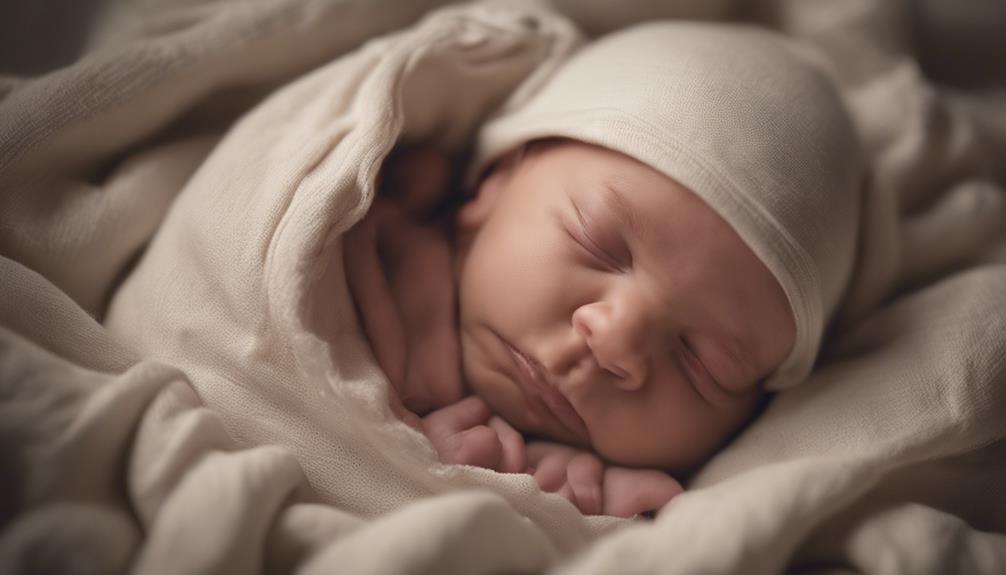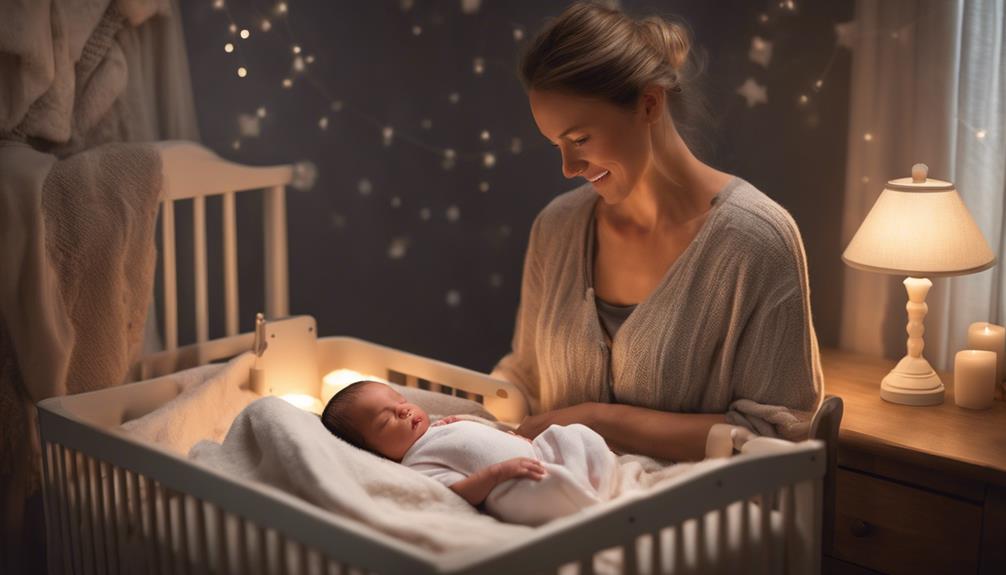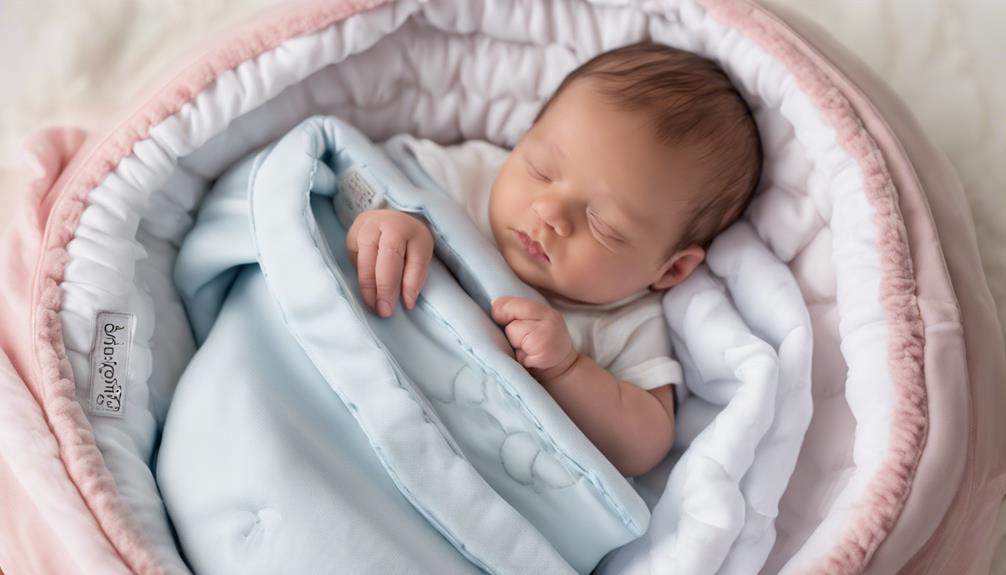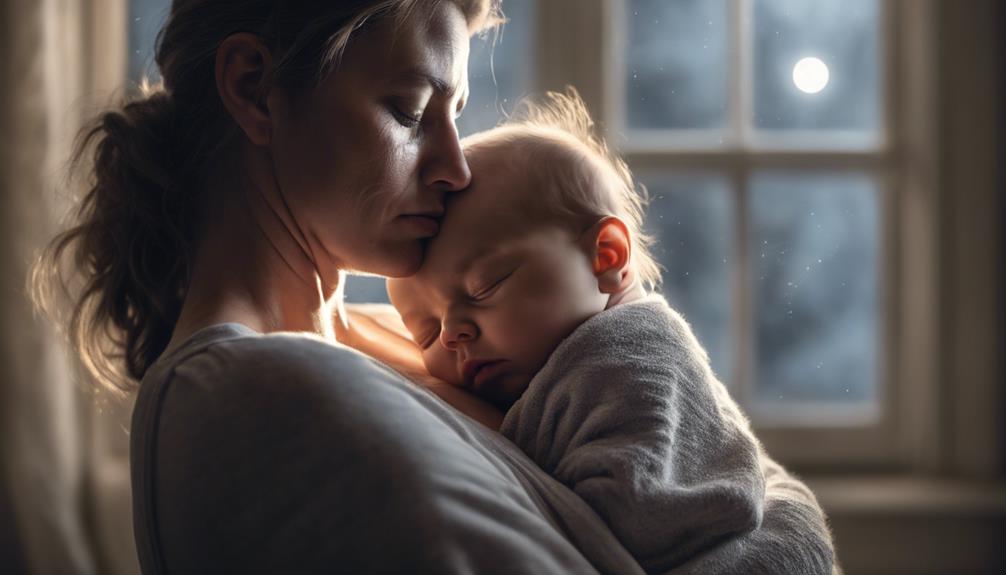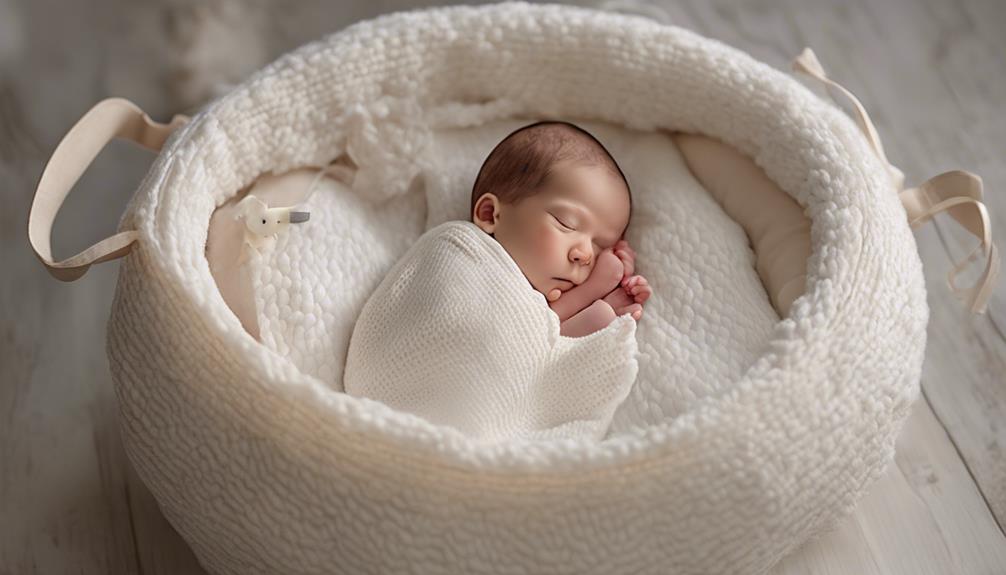As parents, we often seek peaceful nights symbolizing serenity and rest for our newborns. The way we dress them plays an important role in achieving this balance.
But what exactly should we prioritize when it comes to their sleep attire? Let's explore the key elements that can contribute to a tranquil and safe slumber for your little one.
Key Takeaways
- Choose lightweight, breathable fabrics for optimal comfort.
- Opt for snug-fitting sleepwear to prevent entanglement.
- Layer clothing for temperature adaptability.
- Avoid hazards and follow safe sleep practices for peace of mind.
Choosing Appropriate Baby Sleepwear
When preparing your newborn for sleep, opt for lightweight, breathable fabrics like cotton or muslin for their sleepwear. These materials help regulate your baby's body temperature, making sure they stay comfortable throughout the night. Consider using wearable blankets or sleep sacks as a safe alternative to loose blankets, reducing the risk of suffocation. It's important to choose snug-fitting sleepwear to prevent any fabric from bunching up around your infant's face. Avoid clothing with strings, ribbons, or loose parts that could pose a safety hazard during sleep.
Layering your baby's clothing is a practical way to adapt to changing room temperatures. Dress your newborn in easily adjustable layers that can be added or removed as needed. By dressing them in this manner, you can guarantee they stay cozy without overheating or getting too cold. Keeping your baby comfortable and safe in their sleepwear is essential for promoting peaceful and restful nights for both you and your little one.
Understanding Baby Sleep Temperature Needs

To promote your newborn's comfort and safety during sleep, understanding their temperature needs is essential for promoting restful nights. Babies sleep best in a room kept at 68-72°F, so dressing them in one more layer than you'd wear can help regulate their body temperature. Opt for breathable fabrics like cotton or muslin to prevent overheating and guarantee airflow.
Keep an eye out for signs of overheating such as sweating or flushed skin, and adjust their clothing accordingly. It's important to avoid heavy blankets or head-covering sleepwear to reduce the risk of Sudden Infant Death Syndrome (SIDS) and maintain safe sleep practices.
Importance of Comfortable Clothing for Newborns

Understanding your newborn's need for comfortable clothing is key to guaranteeing their body temperature regulation and promoting restful sleep. When it comes to dressing your baby for sleep, here are some essential tips to keep in mind:
- Choose the Right Fabrics: Opt for soft, breathable materials like cotton or wool to prevent overheating and assure your baby's comfort throughout the night.
- Guarantee Proper Fit: Select well-fitted clothing items that aren't too tight to allow for healthy movement while keeping your baby cozy and secure.
- Layer Up: Using lightweight layers allows you to easily adjust your baby's clothing to help regulate their body temperature as needed, especially during fluctuating nighttime conditions.
- Consider Sleep Sacks and Swaddles: These safe sleep options can provide a comforting environment for your newborn, promoting better rest and reducing the risk of sudden movements that might disrupt their sleep.
Tips for Swaddling Your Baby
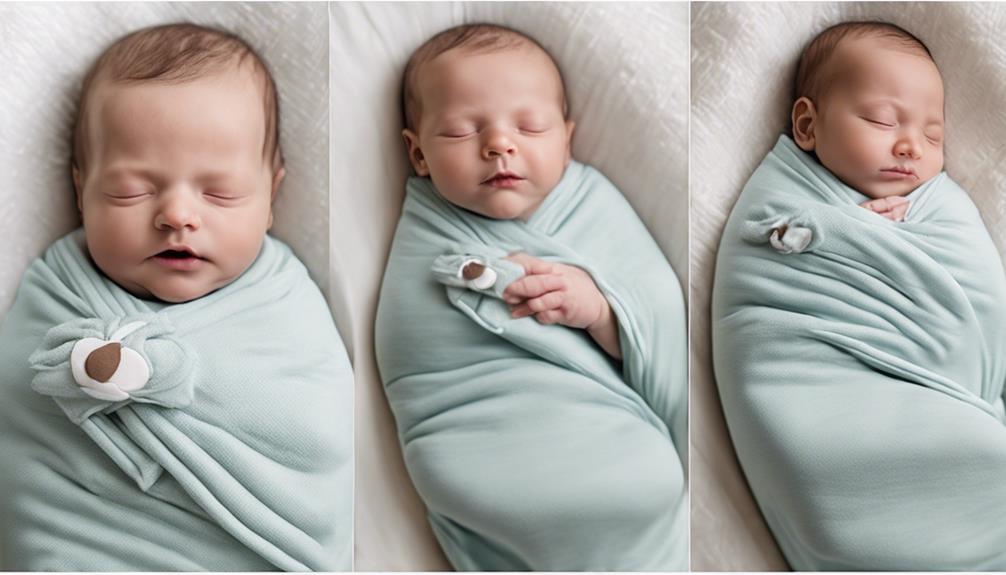
Wondering how to swaddle your baby effectively for a peaceful night's sleep? Swaddling is a wonderful technique that can help newborns feel secure, reduce crying, and promote better sleep by mimicking the cozy environment of the womb. To swaddle your baby properly, wrap the blanket snugly around their body, ensuring that their hips have enough room for movement. This can also prevent the startle reflex from waking them up during sleep. Remember, always lay your swaddled baby on their back to sleep to lower the risk of SIDS (Sudden Infant Death Syndrome).
Here are some essential tips for swaddling your baby:
| Tip | Description |
|---|---|
| Proper Technique | Wrap the blanket snugly around the baby's body, leaving room for hip movement. |
| Startle Reflex | Swaddling helps prevent the startle reflex that can disturb your baby's sleep. |
| Safety Precautions | Always place swaddled babies on their back to sleep and discontinue swaddling once they start showing signs of rolling over to prevent safety hazards. |
Ensuring Safe Sleep Environment
Let's guarantee a safe sleep environment for your newborn by maintaining a room temperature between 68-72°F. Creating a safe sleeping space is essential for your baby's well-being and your peace of mind. Follow these safe sleep recommendations to reduce the risk of SIDS and secure the best sleep for your little one:
- Remove hazards: Keep the crib free of blankets, pillows, and soft objects that could pose suffocation risks. A bare crib is a safe crib.
- Back to sleep: Always place your baby on their back for sleep. This position reduces the risk of SIDS and ensures the best breathing throughout the night.
- Choose the right surface: Opt for a firm and flat mattress that fits snugly in the crib. Avoid any gaps where your baby could get trapped.
- Room-sharing: Consider having your baby sleep in your room (but not in your bed) for the first 6-12 months. This proximity allows for easy monitoring while following safe sleeping guidelines.
Conclusion
As we tuck our precious newborns into bed, we can rest easy knowing they're dressed for a peaceful sleep. By choosing breathable fabrics, layering appropriately, and swaddling with care, we create a cozy and safe sleep environment for our little ones.
Let's embrace the warmth and comfort of our baby's clothing, knowing that they're snug and secure, ready to drift off into dreamland.
Goodnight, sweet dreams, little ones.
